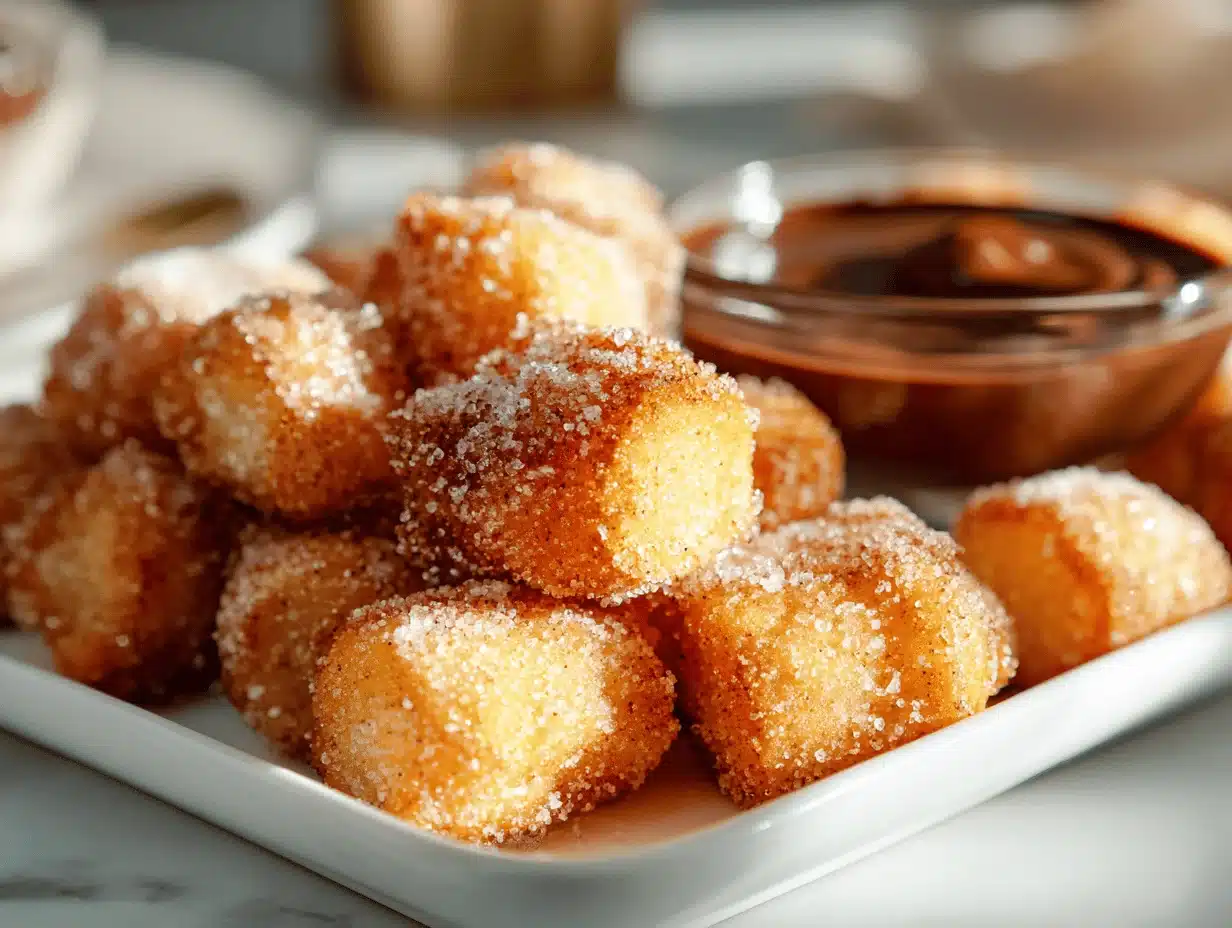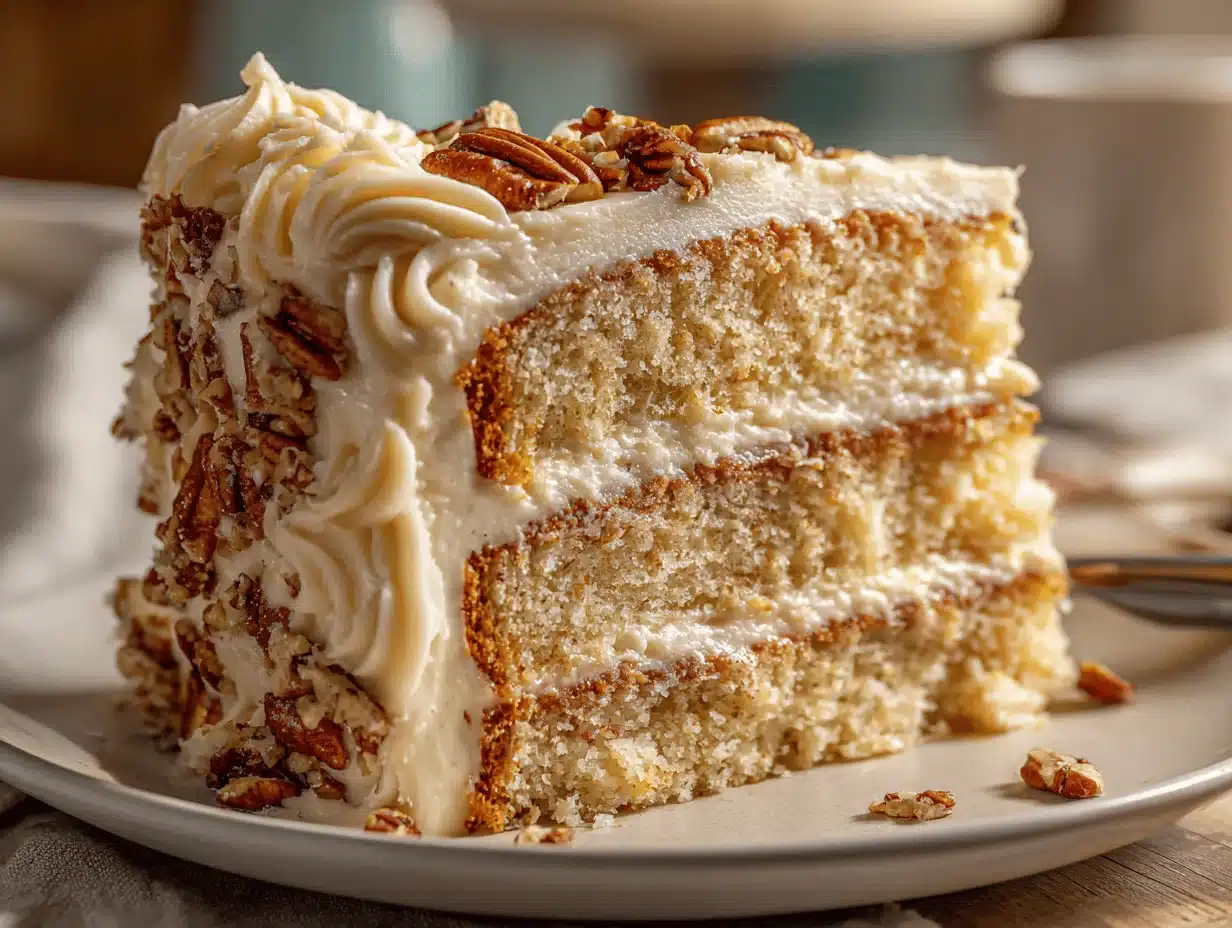The scent of fresh lemon zest and melting butter fills my kitchen, and just like that, I’m grinning ear to ear. There’s something about this lemon butter cake that always pulls me in—maybe it’s the golden color, the tender crumb, or the simple joy of slicing into something so perfectly moist. Honestly, this isn’t just any cake. It’s the sort of dessert that makes you sneak an extra slice when no one’s looking (guilty as charged!).
I first stumbled across a version of this lemon butter cake at a family potluck years ago—back when I thought “moist” was just a word people tossed around for marketing. Oh, was I wrong! One bite and I was hooked: buttery, tangy, and soft enough that a fork glides right through. Over the years, I’ve tweaked and tested this recipe a dozen times, hunting for that perfect balance of lemon brightness and buttery richness. Now, I can say with total confidence: this cake is my go-to whenever I want to impress or just treat myself to a slice of sunshine.
Why do I love this recipe so much? Well, besides being the best lemon butter cake I’ve ever tasted, it’s also surprisingly easy—no fancy techniques or hard-to-find ingredients. The cake stays moist for days (if it lasts that long), and the flavor is pure comfort. Whether you’re a newbie baker or someone who’s been whipping up desserts for years, this recipe is pretty much foolproof. Perfect for birthdays, Mother’s Day brunch, or literally any day you want a bright, homemade treat. Trust me, after making this lemon butter cake, you’ll never look at store-bought versions the same way again.
Why You’ll Love This Lemon Butter Cake Recipe
- Super Simple to Make: This cake comes together in under an hour—no special skills required. Just mix, pour, and bake. It’s great for busy days when you want something sweet without a fuss.
- Packed with Fresh Lemon Flavor: The zest and juice from real lemons make every slice pop with zingy, fresh taste. It’s the kind of citrusy kick that wakes up your taste buds.
- Unbelievably Moist Texture: Thanks to the butter and sour cream, each bite is soft, rich, and never dry. I’ve had plenty of dry “lemon” cakes in my life—this is not one of them.
- Perfect for Any Occasion: Serve it at brunch, bring it to a potluck, or keep it on the counter for afternoon snacks. It’s always a hit, whether you dress it up with berries or keep it simple with a dusting of powdered sugar.
- Family and Friend Approved: I can’t even count how many times people have asked for this recipe. It’s one of those cakes that has people coming back for seconds (and thirds, if they’re sneaky).
What sets this lemon butter cake apart? For starters, I blend the butter and sugar until they’re super fluffy, which gives the cake its signature lightness. The sour cream not only adds moisture but also a gentle tang that pairs perfectly with the lemon. And if you’re into glazes, I drizzle on a quick lemon syrup right after baking, which soaks in and makes the cake taste even more incredible. This step, honestly, is the secret to that bakery-style texture you crave.
It’s not just a “good” cake—it’s the kind that makes you close your eyes after the first bite and just feel happy. There’s a reason it’s become a staple in my house. No matter the occasion, this lemon butter cake delivers that cozy, made-with-love feeling we all need sometimes.
What Ingredients You Will Need
This lemon butter cake recipe uses everyday ingredients you probably already have in your pantry or fridge. Each one plays its own little part in making this cake as dreamy as it is. Here’s what you’ll need:
- For the Cake Batter:
- All-purpose flour (210g / 1 ¾ cups) – Go with a trusted brand for consistent results. I usually reach for King Arthur or Bob’s Red Mill.
- Baking powder (2 tsp) – Gives a gentle lift and airy texture.
- Baking soda (½ tsp) – Works with the sour cream to help the cake rise.
- Salt (½ tsp) – Just a little to balance the sweetness and bump up the lemon flavor.
- Unsalted butter (170g / ¾ cup, softened) – The heart of this cake. If you only have salted, just cut back on the added salt.
- Granulated sugar (225g / 1 cup plus 2 tbsp) – For sweetness and structure.
- Large eggs (3, room temperature) – Hold everything together and add richness.
- Fresh lemon zest (from 2 large lemons) – Adds that zingy, fresh flavor throughout.
- Fresh lemon juice (60ml / ¼ cup) – For bright, tangy taste.
- Sour cream (120g / ½ cup, room temperature) – Makes the cake extra moist and tender. Greek yogurt works in a pinch.
- Vanilla extract (2 tsp) – Rounds out the sharpness of the lemon.
- Whole milk (60ml / ¼ cup, room temperature) – Helps the batter come together smoothly.
- For the Lemon Syrup (Optional but recommended!):
- Fresh lemon juice (60ml / ¼ cup)
- Granulated sugar (50g / ¼ cup)
- For the Glaze (Optional):
- Powdered sugar (120g / 1 cup, sifted) – For a smooth, shiny finish.
- Fresh lemon juice (1-2 tbsp, to thin the glaze)
- Milk (1-2 tsp, as needed)
Ingredient Tips: Use fresh lemons, not bottled juice—trust me, the flavor difference is massive! If you need a dairy-free option, swap the butter for vegan stick butter and the sour cream for coconut yogurt. Almond flour can replace up to a third of the all-purpose flour for a slightly nutty, gluten-friendly version, though the texture will be a bit different (still tasty, though!).
If you’re feeling fancy or want to change things up, you can fold in some blueberries or raspberries into the batter. Just toss them in a bit of flour first so they don’t sink.
Equipment Needed
- 9×5-inch loaf pan – Standard size, but an 8×4-inch will work if that’s what you have; just check the cake a few minutes earlier.
- Mixing bowls (medium and large) – At least two, so you can keep your dry and wet ingredients separate until it’s time to mix.
- Electric mixer or stand mixer – A hand whisk will work in a pinch, but you’ll get the fluffiest butter-sugar mixture with a mixer. I use my old hand mixer and it’s never let me down.
- Microplane or fine grater – For zesting the lemons. A box grater works, but a microplane makes it way easier.
- Measuring cups and spoons – Accuracy is key for baking!
- Rubber spatula – To scrape down the sides of the bowl and fold everything together gently.
- Wire rack – For cooling the cake evenly—if you skip this, the bottom can get a bit soggy.
If you don’t have a loaf pan, you can use a square 8-inch pan or even make cupcakes—just adjust bake time accordingly. I’ve used silicone pans before, but I find metal pans give a better golden crust. Whatever you use, don’t forget to grease and line it with parchment paper for easy removal (trust me, I’ve had more than one cake stick before I learned that lesson!).
How to Make Lemon Butter Cake (Step-by-Step Method)

-
Preheat and Prepare:
Preheat your oven to 350°F (175°C). Grease a 9×5-inch loaf pan and line it with parchment paper, leaving an overhang for easy lifting. This step saves you from heartbreak later (learned that one the hard way!).
-
Mix Dry Ingredients:
In a medium bowl, whisk together 1 ¾ cups (210g) flour, 2 tsp baking powder, ½ tsp baking soda, and ½ tsp salt. Set aside. This prevents lumps and guarantees even mixing later.
-
Cream Butter and Sugar:
In a large bowl, beat ¾ cup (170g) softened butter with 1 cup plus 2 tbsp (225g) sugar for 3-4 minutes, until light and fluffy. Use an electric mixer on medium-high. The mixture should look pale and almost doubled in volume—this step is key for a tender crumb.
-
Add Eggs and Lemon:
Beat in 3 eggs, one at a time, scraping down the bowl after each. Add the zest of 2 lemons and ¼ cup (60ml) fresh lemon juice. Mix until just combined.
-
Combine Wet Ingredients:
Stir in ½ cup (120g) sour cream and 2 tsp vanilla extract. The batter might look a little curdled—don’t panic! It comes together once you add the dry ingredients.
-
Add Dry Ingredients:
With the mixer on low, add half the flour mixture, then ¼ cup (60ml) milk, then the remaining flour. Mix just until you see no more dry streaks. Overmixing can make the cake tough, so stop as soon as everything’s combined.
-
Fill and Bake:
Pour the batter into your prepared pan. Smooth the top with a spatula. Bake for 45-55 minutes, or until a toothpick inserted in the center comes out clean and the top springs back when gently pressed. Check at 45 minutes—every oven is a little different.
-
Make Lemon Syrup (Optional):
While the cake bakes, combine ¼ cup (60ml) lemon juice and ¼ cup (50g) sugar in a small saucepan. Heat until the sugar dissolves. Set aside.
-
Soak the Cake:
When the cake is done, let it cool in the pan for 10 minutes. Then, poke holes all over the top with a skewer and slowly pour the lemon syrup over. The cake soaks it right up—don’t rush!
-
Cool and Glaze (Optional):
Lift the cake out and cool completely on a wire rack. For the glaze, whisk together 1 cup (120g) powdered sugar and 1-2 tbsp lemon juice (plus a splash of milk if needed) until smooth. Drizzle over the cooled cake. Let the glaze set before slicing. (If you can resist!)
Troubleshooting: If the cake is browning too quickly, tent it loosely with foil halfway through. If your cake sinks, it’s likely underbaked or the batter was overmixed. Don’t skip the parchment paper—trust me, I’ve regretted it!
For best results, use ingredients at room temperature. Cold butter or eggs can cause the batter to curdle or bake unevenly. And remember, baking is as much about the feel as the science—if the batter looks thick but creamy, you’re on the right track.
Cooking Tips & Techniques
After making this lemon butter cake more times than I can count, I’ve gathered a few tricks that really make a difference:
- Room Temperature Ingredients: Let your butter, eggs, sour cream, and milk sit out beforehand. They blend together way more smoothly than if they’re cold, which helps the cake rise evenly.
- Creaming Is Key: Don’t rush the creaming step. The butter and sugar should look pale, fluffy, and almost double in volume. This creates those tiny air pockets that keep the cake light.
- Don’t Overmix: Once you add the flour, mix just until combined. Overmixing at this stage can make your cake dense. I made this mistake a few times and ended up with a gummy loaf—lesson learned!
- Test for Doneness Early: Ovens can be quirky. Start testing at 45 minutes. A few moist crumbs on the toothpick is fine, but no wet batter.
- Let It Rest Before Glazing: I know it’s hard, but letting the cake cool makes the glaze set perfectly. If you pour it on while the cake is hot, it’ll melt and run off.
- Don’t Skip the Syrup: The lemon syrup isn’t just “extra”—it makes the cake incredibly moist and amps up the tangy flavor. I didn’t use it the first time and regretted it!
- Storage Matters: Keep the cake tightly wrapped to avoid it drying out. It actually tastes even more lemony the next day.
If you’re multitasking (like I usually am), measure out your ingredients before you start. It saves time and helps prevent those “wait, did I already add the baking powder?” moments. And if you want super-even slices, chill the cake a bit before cutting—trust me, it’s worth the wait for those perfect Pinterest-ready pieces.
Variations & Adaptations
There’s plenty of room to play with this lemon butter cake recipe. Here are a few favorite twists:
- Gluten-Free Version: Swap the all-purpose flour for a 1:1 gluten-free baking blend (like Cup4Cup or King Arthur’s). The cake turns out just as moist, though the crumb is a little softer. It’s great for friends who need to avoid gluten.
- Berry Lemon Loaf: Fold in 1 cup (150g) of fresh blueberries or raspberries right before baking. Toss them in a spoonful of flour first to keep them from sinking. The burst of fruit with the lemon is unreal!
- Almond Lemon Cake: Replace ⅓ of the flour with almond flour and add a splash of almond extract along with the vanilla. You get a richer, slightly nutty flavor (and it’s naturally higher in protein).
- Dairy-Free Option: Use vegan butter and coconut yogurt in place of the dairy. The cake stays just as soft and flavorful—nobody will even notice the swap.
- Muffins or Cupcakes: Scoop the batter into a lined muffin tin and bake for 18-22 minutes. Perfect for grab-and-go treats or parties.
One of my favorite spins? I’ve tried swirling in a spoonful of lemon curd just before baking—wow. The pockets of extra lemon are a game-changer. Feel free to make this cake your own: try orange or lime for a citrus twist, or sprinkle poppy seeds into the batter for a classic lemon poppy seed loaf.
Serving & Storage Suggestions
This lemon butter cake shines at room temperature, but it’s also delicious lightly chilled. I love slicing thick pieces and serving them with a dusting of powdered sugar or a pile of fresh berries. For something fancy, add a dollop of whipped cream or a scoop of vanilla ice cream—so good!
Pair it with hot coffee or a cup of Earl Grey tea for a cozy afternoon snack. It’s also a lovely addition to brunch tables or special occasions (Mother’s Day, baby showers, you name it).
For storage, wrap the cooled cake tightly in plastic wrap or foil and keep it at room temperature for up to 3 days. For even longer freshness, refrigerate in an airtight container for up to a week. You can also freeze individual slices—just wrap them well and thaw overnight in the fridge. To reheat, pop a slice in the microwave for 10-15 seconds or warm it up in a low oven for a few minutes. The flavors actually deepen after a day, so don’t be afraid to make it ahead!
Nutritional Information & Benefits
Each slice (based on 10 slices per loaf) has roughly:
- Calories: 290
- Fat: 13g
- Carbohydrates: 39g
- Protein: 4g
- Sugar: 23g
The main health benefit? That blast of vitamin C from real lemon juice and zest (plus a little happiness boost from treating yourself!). Using real butter and sour cream means you get a dessert that’s richer in flavor but not overloaded with artificial stuff. You can reduce the sugar a bit if needed, or use a low-carb sweetener for a lighter version. This cake contains gluten, dairy, and eggs, but there are easy substitutions above for most dietary needs.
I’ve found that enjoying a small, homemade treat like this lemon butter cake actually keeps me more on track with balanced eating—it’s satisfying, and I know exactly what’s in it.
Conclusion
If you’re searching for a dessert that’s both easy and show-stopping, this lemon butter cake recipe is it. The combination of zesty lemon, real butter, and a melt-in-your-mouth crumb makes every bite special—no matter the season or occasion. I love how simple ingredients come together to make something that feels like a little celebration every time.
Don’t be afraid to put your own spin on it, whether you add berries, swap flours, or double the glaze (no judgment—I do it, too!). This cake has quickly become a favorite in my family, and I hope it finds a spot in your recipe box as well.
Give it a try, share your tweaks, or let me know how it went in the comments! Seriously, nothing makes my day more than hearing about your baking adventures. Happy baking—and here’s to extra lemony, buttery goodness!
Frequently Asked Questions
How do I keep my lemon butter cake moist?
Using sour cream and real butter is key, but the lemon syrup soak locks in extra moisture. Don’t overbake—check at 45 minutes, and pull it when a toothpick comes out mostly clean.
Can I freeze lemon butter cake?
Absolutely! Wrap individual slices or the whole loaf tightly in plastic wrap and freeze for up to 2 months. Thaw overnight in the fridge and bring to room temperature before serving.
Can I use bottled lemon juice instead of fresh?
You can, but the flavor won’t be as bright or fresh. I really recommend real lemons for zest and juice—it makes a huge difference!
What should I do if my cake sinks in the middle?
This usually means the cake was underbaked or the batter was overmixed. Make sure to check doneness and mix just until the flour disappears for best results.
Can I make this recipe dairy-free or gluten-free?
Yes! Use a 1:1 gluten-free flour blend for gluten-free, and swap in vegan butter and coconut yogurt for dairy-free. The cake will still be moist and delicious.
Pin This Recipe!


Lemon Butter Cake
- Total Time: 1 hour 10 minutes
- Yield: 10 slices 1x
Description
This easy homemade lemon butter cake is incredibly moist, bursting with fresh lemon flavor, and topped with a tangy glaze. Perfect for any occasion, it stays tender for days and is sure to impress family and friends.
Ingredients
- 1 3/4 cups (210g) all-purpose flour
- 2 teaspoons baking powder
- 1/2 teaspoon baking soda
- 1/2 teaspoon salt
- 3/4 cup (170g) unsalted butter, softened
- 1 cup plus 2 tablespoons (225g) granulated sugar
- 3 large eggs, room temperature
- Zest of 2 large lemons
- 1/4 cup (60ml) fresh lemon juice
- 1/2 cup (120g) sour cream, room temperature (or Greek yogurt)
- 2 teaspoons vanilla extract
- 1/4 cup (60ml) whole milk, room temperature
- For the Lemon Syrup (optional):
- 1/4 cup (60ml) fresh lemon juice
- 1/4 cup (50g) granulated sugar
- For the Glaze (optional):
- 1 cup (120g) powdered sugar, sifted
- 1–2 tablespoons fresh lemon juice
- 1–2 teaspoons milk, as needed
Instructions
- Preheat your oven to 350°F (175°C). Grease a 9×5-inch loaf pan and line it with parchment paper, leaving an overhang for easy lifting.
- In a medium bowl, whisk together flour, baking powder, baking soda, and salt. Set aside.
- In a large bowl, beat softened butter with sugar for 3-4 minutes, until light and fluffy, using an electric mixer on medium-high.
- Beat in eggs one at a time, scraping down the bowl after each. Add lemon zest and lemon juice. Mix until just combined.
- Stir in sour cream and vanilla extract. The batter may look curdled; this is normal.
- With the mixer on low, add half the flour mixture, then the milk, then the remaining flour. Mix just until no dry streaks remain.
- Pour the batter into the prepared pan and smooth the top. Bake for 45-55 minutes, or until a toothpick inserted in the center comes out clean.
- While the cake bakes, make the lemon syrup (if using): combine lemon juice and sugar in a small saucepan and heat until the sugar dissolves.
- Let the cake cool in the pan for 10 minutes. Poke holes all over the top with a skewer and slowly pour the lemon syrup over the cake.
- Lift the cake out and cool completely on a wire rack.
- For the glaze (if using): whisk together powdered sugar and lemon juice (plus milk as needed) until smooth. Drizzle over the cooled cake and let set before slicing.
Notes
Use room temperature ingredients for best results. Don’t overmix the batter after adding flour to keep the cake tender. The lemon syrup soak is optional but highly recommended for extra moisture and tang. Store tightly wrapped at room temperature for up to 3 days or freeze for longer storage. For variations, try adding berries, using gluten-free flour, or making muffins.
- Prep Time: 15 minutes
- Cook Time: 45-55 minutes
- Category: Dessert
- Cuisine: American
Nutrition
- Serving Size: 1 slice (1/10 of loaf)
- Calories: 290
- Sugar: 23
- Sodium: 180
- Fat: 13
- Saturated Fat: 8
- Carbohydrates: 39
- Fiber: 1
- Protein: 4
Keywords: lemon butter cake, lemon loaf, moist lemon cake, easy lemon cake, homemade lemon dessert, lemon glaze, loaf cake, spring dessert, brunch cake, lemon syrup









